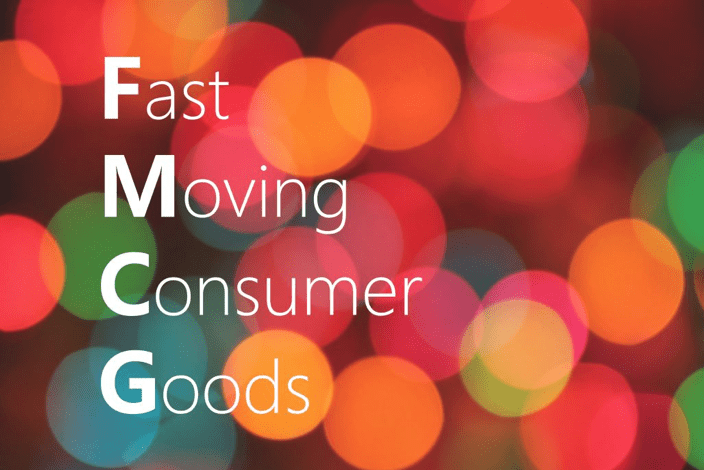
Fast Moving Consumer Goods: a wealth of opportunities and challenges
Coming out of business school, I worked for seven years in the world of CPG – Consumer Package Goods. In recent years, a new and more compelling descriptor emerged for the category: Fast Moving Consumer Goods, or FMCG. These are products that turn…or should turn…quickly on retail shelves and online. They are typified by high volume and repurchase, low prices, thin margins, cost-sensitive distribution networks, and intense competition. Every one of us has been a consumer of FMCG products, virtually since birth: baby food; cereals; milk; cake mixes; personal care; meat, fish, and poultry; produce; and soft drinks to name just a few. FMCG is a $4 Trillion market that accounts for over half of all consumer spending.[i]
The FMCG market is in the midst of a major transformation. An evolution that borders on revolution. Visionary companies are harnessing a set of developing trends to drive growth. Companies that are more reactive are forced to respond to these trends and competition simply to stay in the game. Nielsen calls what is happening “seismic, long-term shifts” in which strategies appropriate today “won’t garner the same success tomorrow—the playbook has changed”.[ii]
Examples of the trends that are creating both opportunities and challenges include:
- 1. Changing consumer preferences. Consumers are voicing and acting on a number of desires. For example, we all want the benefits of maximum convenience: shopping for whatever we want, when, where, and how we want. With on-demand delivery to any location. Another example is a lifestyle change; an increased preference for products that support improved health and wellness. Recently, a new preference has emerged that would have been unthinkable in the preceding era of mass-produced goods. Consumers are opting to purchase brands that offer personalization.
- 2. Channel shifts. Omnichannel presence is now a fundamental requirement for many FMCG product categories. One simple example of this new landscape is pet food. Last year, online sales of dog food in the US achieved parity with bricks and mortar purchases, which was a major change over just a few years. Even more impressive as an indicator of the future is that online sales for the top 20 brands grew at a rate of 114% year-over-year, while in-store purchases were up only 1.1%.[iii]
- 3. Geographic expansion. Economic development is fueling sales of consumer products in geographies that historically were insignificant in terms of traditional consumer package goods sales. A notable example is India, where FMCG is projected to grow from US $49B in 2016 to US $104B by 2020.[iv]
- 4. Fresh foods. Fresh and perishable foods are a bright spot for bricks-and-mortar grocery stores. Consumers are spending more of their money to feed an increased appetite for fresh meals that they prepare on their own, as well as deli dining, and ready-to-eat meals. This $1.05 Trillion category accounted for 49% of all 2017 dollar sales growth in FMCG[v]and e-Commerce accounted for 82% of that growth.[vi]
- 5. Going Green: The momentum behind sustainability is driving new thinking and processes for product formulas, sourcing, packaging, manufacturing and distribution. The number of companies pursuing sustainability continues to grow and some companies, such as Patagonia, are sufficiently committed to also donate at meaningful levels to various green causes. Forbes publishes the Corporate Knights annual list of the world’s most sustainable companies among 4,000 companies with market valuations greater than $2 Billion. The top 100 companies, include representatives from financial services, pharmaceutical, electronics, automotive, media, real estate, and other sectors. 10% were FMCG-focused entities.[vii]
- 6. Consumer delight. Traditional notions of customer loyalty have ruptured and are being replaced with attempts to create new levels of satisfaction. Efforts to recognize and respond to consumer preferences and exceed expectations are shaping new forms of loyalty which, in turn, translate to business growth, which is what our 4thaxis of alignment is all about in our A4 Precision Alignment™.
- 7. We are all witnessing the drive to turn massive amounts of data, throughout the value chain, into actionable information and fast-cycle planning and execution. Data collection and analysis has always been a core tool for every CPG business. Now it is a fundamental enabler of the market’s transformation.
These seven trends, and many others, present a wealth of opportunities. One thing is essential if an FMCG company is to capitalize on them: a relentless commitment to perfect alignment across the value chain of product developers, suppliers, manufacturers, marketers, and distribution partners. With the singular goal of delivering customer delight. Any misalignment in this fast-moving market can cause nightmarish disasters in terms of spoilage, out-of-stocks, cost overruns and levels of customer and channel dissatisfaction that open the door to competitors and wreak internal havoc.
Stay tuned as, in future articles, we explore ways that FMCG companies are responding or should respond to the challenge.
[i] Cision 12/21/2017, and Investopedia.
[ii] The Nielsen Company, 12/4/2017.
[iii] The Nielsen Company, 12/4/2017.
[iv] ASSOCHAM-TechSci, 10/10/2016.
[v] FoodDive and The Nielsen Company, 6/19/2018.
[vi] Supermarket News, 6/14/2018.
[vii] Forbes, 1/23/2018.